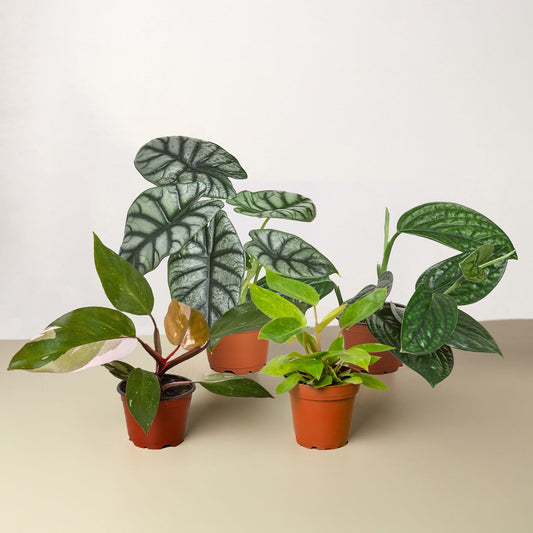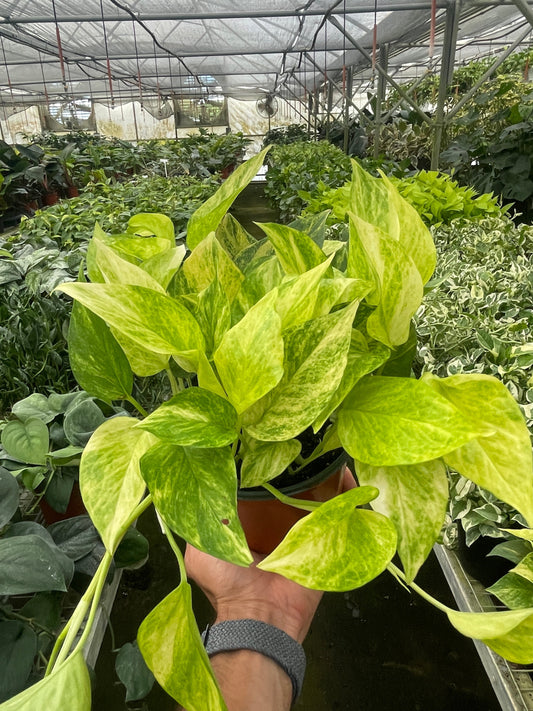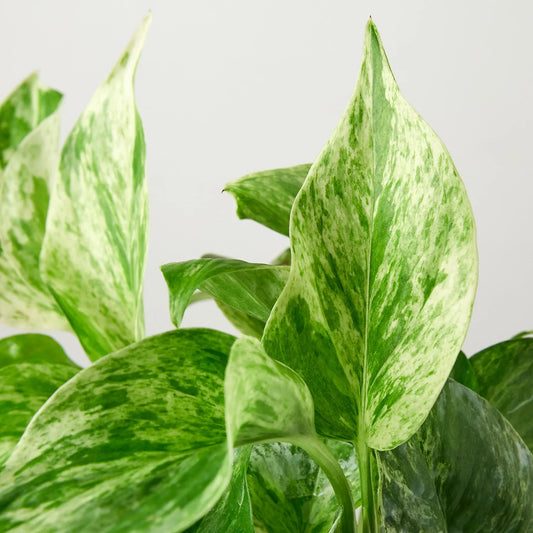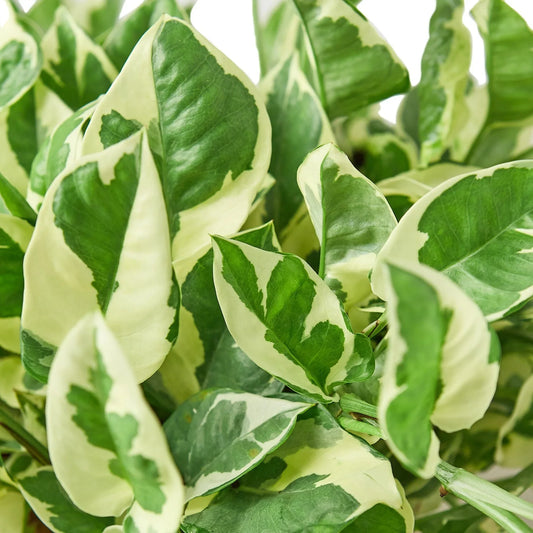Why Are My Pearls And Jade Pothos Leaves Turning Brown?
Cafe Planta Team
So, you've spotted some brown patches on your Pearls and Jade Pothos leaves, and naturally, you're wondering what's going on. Don't worry, you're not alone in this! Many plant parents face similar challenges, and the good news is, with a little detective work, you can figure out what's causing those unsightly spots and bring your plant back to its thriving self.
In this article, we'll explore the most common reasons your Pearls and Jade Pothos might be turning brown. We'll cover everything from watering habits to lighting issues, pest problems, and even the role of humidity. By the end, you'll not only understand what's going wrong but also how to fix it. Let's get started, shall we?
Improper Watering Techniques
One of the most frequent culprits behind browning leaves is improper watering. It's like the Goldilocks of plant care—not too much, not too little, but just right. Overwatering and underwatering can both lead to brown leaves, but the signs they leave behind are a bit different.
When you overwater your Pothos, the roots can become waterlogged and start to rot. This root rot manifests as brown, mushy patches on the leaves. On the flip side, if you underwater, the leaves may develop dry, crispy brown edges. It's a delicate balance!
To get it right, check the soil moisture level before watering. Stick your finger an inch or so into the soil. If it feels dry, it's time to water. If it's still damp, give it a few more days. A moisture meter can also be a helpful tool for those who prefer more precision.
Lighting Issues
Lighting plays a crucial role in the health of your Pearls and Jade Pothos. While these plants are known for their adaptability, too much direct sunlight can scorch their leaves, resulting in brown patches. Indirect light is the way to go!
If your Pothos is sitting on a windowsill with harsh sun exposure, consider moving it to a spot with filtered light. Bright, indirect light is ideal. Think of a room where you can read comfortably without squinting—your Pothos would likely thrive there too.
Conversely, too little light can also be problematic. In low-light conditions, the plant may struggle to photosynthesize properly, leading to yellowing and browning leaves. If your plant is in a dim corner, you might want to consider supplementing with a grow light.
Pest Infestations
Pesky pests like spider mites, aphids, and mealybugs can make your plant's life (and yours) a bit of a nightmare. These tiny invaders suck the sap from the leaves, leaving brown spots and causing leaf drop if left untreated.
Regularly inspect your plant for signs of pests. Look under the leaves and along the stems for any small, moving creatures or webbing. If you spot any, don't panic! There are plenty of ways to tackle them:
- Insecticidal soap or neem oil: Safe and effective, these products can help eliminate pests without harming your plant.
- Manual removal: For light infestations, a damp cloth can be used to wipe away the pests.
- Isolation: Keep your affected plant away from others to prevent the pests from spreading.
Consistency is key with pest control. You might need to apply treatments a few times to fully eradicate the problem.
Humidity Levels
Pothos plants love a bit of humidity. If the air in your home is on the dry side, especially during winter months when heating is on, your plant might start showing signs of stress. Brown tips or edges can be a clue that it's craving a more humid environment.
To boost humidity, you can try:
- Misting: Lightly misting the leaves can temporarily raise humidity around the plant.
- Humidifier: This is a great option for plant lovers who want to maintain consistent humidity.
- Pebble tray: Place your pot on a tray filled with water and pebbles. As the water evaporates, it increases humidity around the plant.
Remember, your Pothos doesn't want to live in a rainforest, but a little extra moisture can make a big difference.
Soil Quality and Nutrients
The soil your Pothos is planted in can also be a factor in leaf browning. Poor quality or depleted soil lacks the nutrients your plant needs to grow healthy and strong. Over time, nutrient deficiencies can lead to discoloration and brown spots.
Repotting your plant every couple of years with fresh soil can help, but you can also boost nutrient levels by using a balanced liquid fertilizer. Dilute it to half strength and apply it every month during the growing season. Be cautious not to over-fertilize, as this can lead to burn and further browning.
Temperature Stress
Temperature fluctuations can stress your Pothos, especially if it's exposed to drafts or sudden changes in temperature. Brown, wilted leaves can be an indication of temperature shock.
Pothos thrive in temperatures between 65-85°F (18-29°C). Ensure your plant isn't near a drafty window, heater, or air conditioner. Consistent, moderate temperatures will keep your plant happy and healthy.
Root Health
Sometimes, the problem lies beneath the surface. If your plant's roots aren't healthy, the leaves will show signs of distress. Root rot, often caused by overwatering or poor drainage, leads to browning leaves.
If you suspect root issues, gently remove the plant from its pot and inspect the roots. Healthy roots should be white and firm. If they're brown and mushy, you'll need to trim away the affected areas and repot the plant in fresh soil. Ensure your pot has drainage holes to prevent future waterlogging.
Natural Aging Process
Lastly, it's important to remember that plants, like all living things, go through a natural aging process. Sometimes, older leaves will naturally turn brown and die off as part of the plant's lifecycle. If you notice a few older leaves browning while the rest of the plant looks healthy and vibrant, it might just be a natural progression.
In this case, simply prune away the dead leaves to keep your plant looking tidy and focus on maintaining healthy conditions for the rest of the foliage.
Final Thoughts
There you have it—a comprehensive look at what might be causing those brown leaves on your Pearls and Jade Pothos. From watering habits to pest control, lighting, and humidity, it’s all about finding the right balance to keep your plant thriving.
At Cafe Planta, we're passionate about helping you create a lush, green haven in your home. If you have any questions or need further guidance on plant care, feel free to email us or send a message on our Instagram. We're here to support you on your plant journey!



















